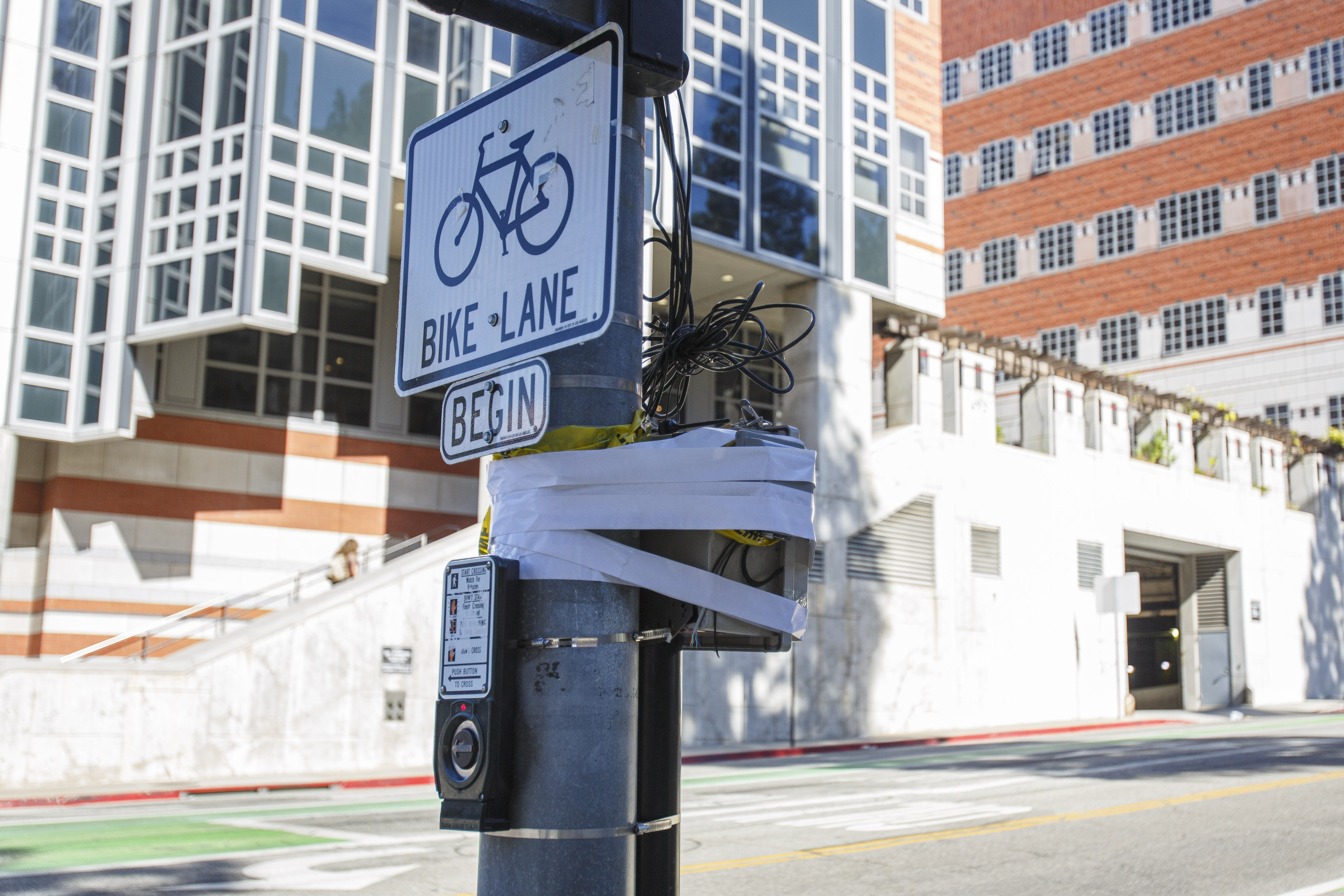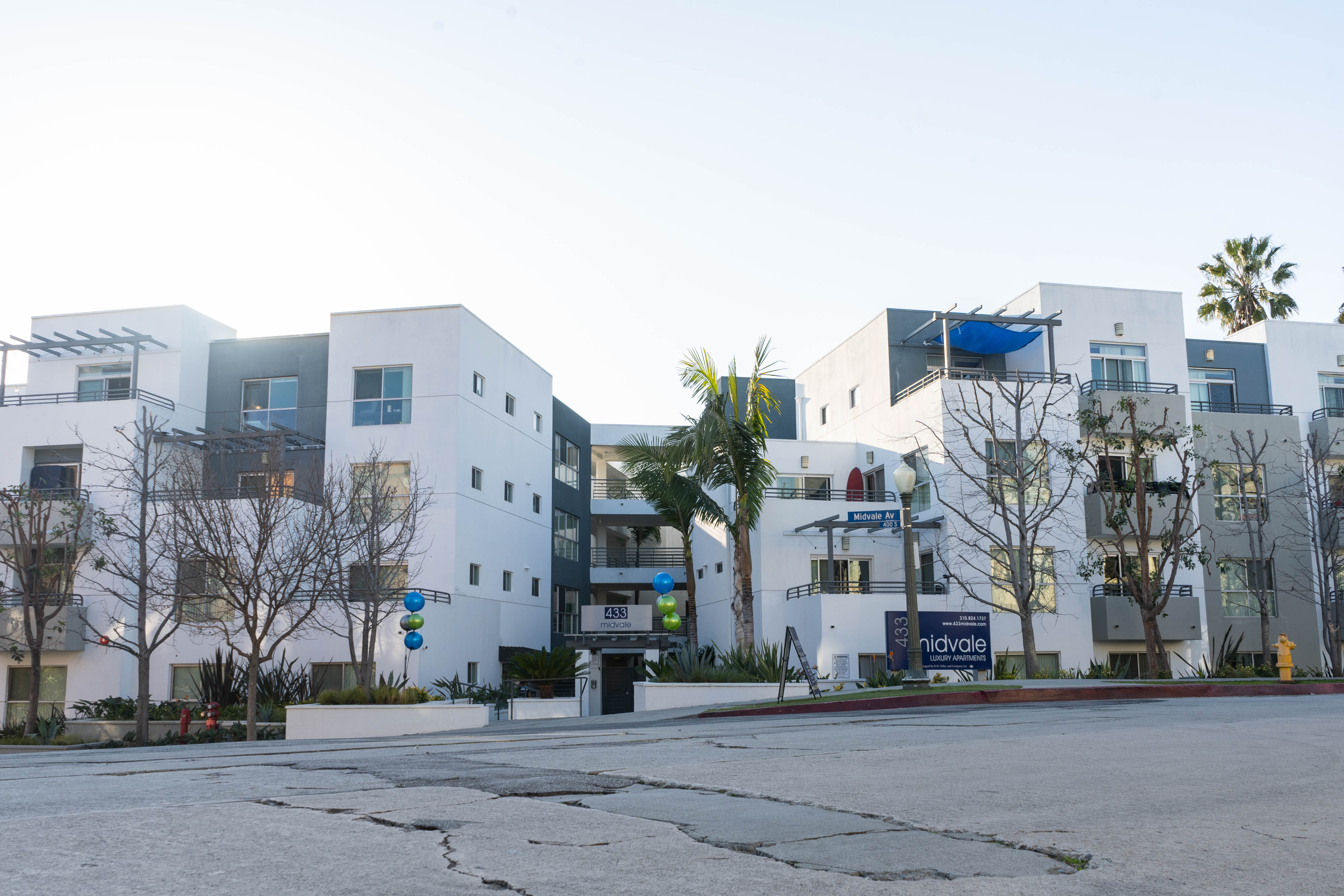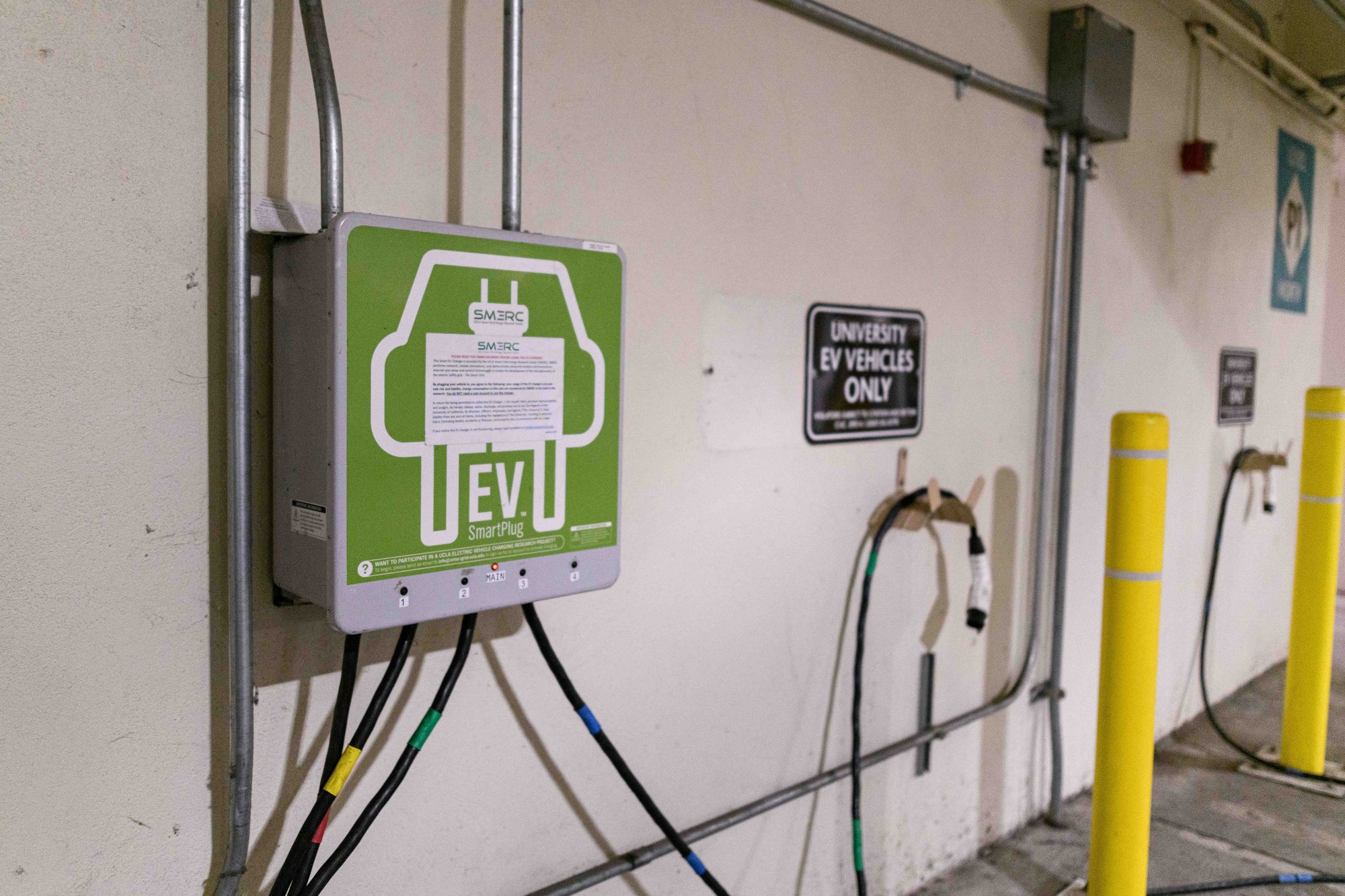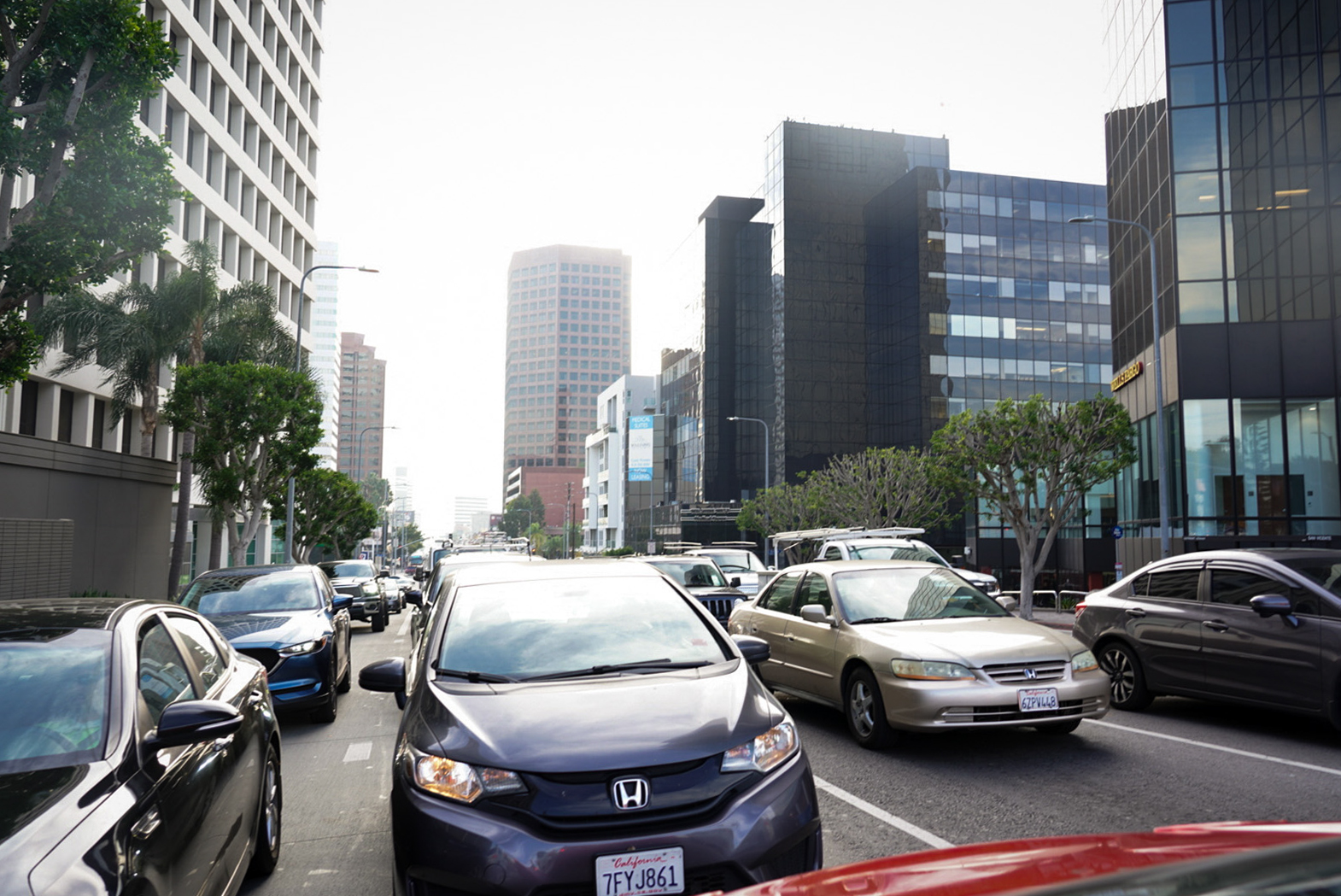Q&A: Ann Carlson shares her work in the National Highway Traffic Safety Administration
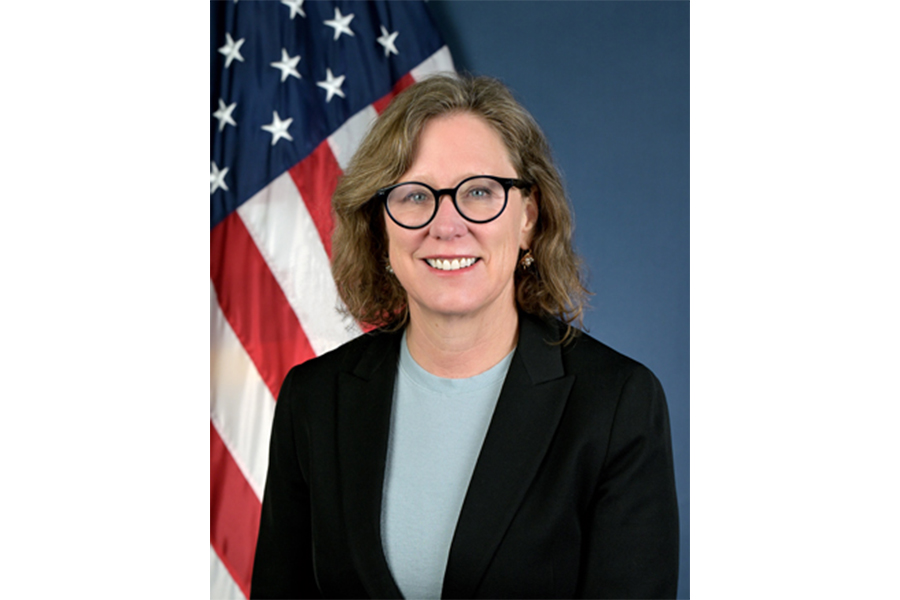
Ann Carlson, the Shirley Shapiro Professor of Environmental Law at UCLA, is pictured. Carlson served as the National Highway Traffic Safety Administration’s acting administrator before returning to the UCLA School of Law as a professor. (Wikimedia Commons photo by National Highway Traffic Safety Administration)
By Maya Vibhakar
March 31, 2024 5:14 p.m.
This post was updated March 31 at 10:02 p.m.
Ann Carlson, the Shirley Shapiro Professor of Environmental Law at UCLA, spoke with Daily Bruin contributor Maya Vibhakar to discuss her work at the National Highway Traffic Safety Administration.
Carlson was previously the faculty co-director of the Emmett Institute on Climate Change and the Environment at UCLA School of Law, and was appointed to the NHTSA as chief counsel at the beginning of President Joe Biden’s administration in January 2021. She worked as acting administrator of NHTSA starting in September 2022 before returning to the UCLA School of Law as a professor in February.
This interview has been edited for length and clarity.
Daily Bruin: What inspired you to pursue a career in public service in addition to your work in academia and law? Why the National Highway Traffic Safety Administration in particular?
Ann Carlson: I was approached about whether I’d be interested in serving in a Biden-Harris administration during the transition after they were elected to office. It seemed like a perfect opportunity to use what I have studied for my whole career – to really work on incredibly important public policy issues.
There were really two that NHTSA is engaged in. The first is that the agency sets fuel economy standards for cars and trucks. The transportation sector is the biggest emitter of greenhouse gases in the United States. Globally, it’s really important to cut emissions from the transportation sector as well. I think the reason that I was approached to go to NHTSA is because of the role that it plays in setting those standards, which are called the CAFE (Corporate Average Fuel Economy) standards.
In addition, NHTSA is working every single day to drive down traffic fatalities, injuries and crashes that cause a lot of economic devastation, in addition to the horrible human toll. We have an epidemic of traffic fatalities. They actually went up during the pandemic, not down. So this was really again an opportunity to serve, as they’re extremely important issues. I thought I could bring something to the table, and it was a time in my career when it worked for me.
DB: Did having a background in environmental law give you any unique insights while working on safety issues at NHTSA?
AC: One of the principal roles that NHTSA plays is setting Federal Motor Vehicle Safety Standards. The process of crafting and finalizing regulations is one that is really complicated and really important, and that I’ve studied and had a lot of experience with over the years, so I think that was a pretty transferable skill. I did have an incredible career team behind me to provide a lot of the substantive expertise on things like the economic consequences of traffic crashes, the engineering required to craft a regulation and an incredible legal team who drafts the regulations.
I fought for resources for the agency. One of our great successes is that we increased NHTSA’s budget by about 50% from the time I started in 2021 until the time I left. We increased our staff from a little over 600 to close to 750 – that was just a huge part of it.
I think my experience running the Emmett Institute was really helpful. That’s an institute on campus that focuses on public policy issues involving the environment and climate change. I had managed people, I had spent a lot of time thinking about things like budgets, et cetera – although, of course, this was on a much bigger scale than what the Emmett Institute does.
DB: In addition to growing the agency, what were some other key initiatives that were accomplished during your tenure as acting administrator of NHTSA?
AC: I’m going to talk about several different areas. Let me start with rulemaking. NHTSA sets Federal Motor Vehicle Safety Standards – it does so under a statute called the Motor Vehicle Safety Act. We issued more than 40 final and proposed rules. Right now there are proposed rules that are working toward finalization to require automatic emergency braking at pretty stringent levels for light-duty vehicles. That’s cars, trucks, SUVs, what people drive every day. And then for heavy vehicles, those (breaking systems) provide huge safety benefits.
We also had new standards for child restraint systems – that’s basically child seats – for motor coaches, buses, et cetera. Rollover standards are much more stringent. Half of all fatalities are unbelted, so it’s really important to get people to wear their seat belts. It’s a really simple move, but really important.
We, for the first time ever, issued pedestrian protection. We tried to develop technology that will avoid crashes in the first place. The automatic emergency braking actually has a pedestrian component and one that works at night, when most pedestrian fatalities occur. But if someone does get hit, we’re in the process of setting new standards to make the vehicle less dangerous, to absorb more energy if a pedestrian is actually hit.
We also updated what’s called the five-star safety program. If you go to the car dealer and you’re looking at the label on a vehicle, you’ll see that there are crash ratings. That’s part of NHTSA’s New Car Assessment Program or five-star rating program. For the first time since about 2012, we are proposing very significant updates to that program that will include things like crash avoidance technology: some new technologies like Lane Keeping Assist, automatic emergency braking. It’s something that was long overdue.
We also did a lot on the regulation of automated vehicles. You may have seen that Santa Monica is about to allow (automated car company) Waymo to pick up passengers in vehicles that don’t have drivers, that are fully automated. Those vehicles can be on the road as long as they are compliant with our vehicle safety standards, but NHTSA still looks at them to ensure their safety. We issued something called Standing General Order that requires all automated vehicle operators, manufacturers, et cetera to report any crash, no matter how small. That gives the agency the opportunity to follow up with investigation. In a couple of instances, we have recalled vehicles.
Moving to the enforcement side, NHTSA also issues thousands of recalls every year, and one of the ones that got the most attention was recalling all Teslas because of the vehicles’ problems with the level two driving systems. Tesla calls it autopilot. That recall happened a few months ago, and NHTSA is in the process of evaluating the remedy.
Finally, NHTSA administers highway safety grants to states. One of the things that we accomplished in the bipartisan infrastructure law is to increase those grants to states by about 30%. States use this money to try to get drivers to reduce risky behaviors. Combined with that is a communications campaign that NHTSA engages in, so “click it or ticket” is probably the most famous, if you’ve heard the slogans. “Drive sober or get pulled over” is another.
The CAFE standards (were also) a really important part of my tenure at NHTSA. We were directed to basically evaluate them and see whether we should replace them, which we did. The first round of standards affects model years 2024, 2025 and 2026. We also repealed a rule that said that California couldn’t regulate on its own, which has been a very important part of cutting transportation emissions. Then, we issued a proposed rule for model years 2027 through 2033 – that rule should be finalized over the course of the next couple of months. We did that in conjunction with the Environmental Protection Agency.
DB: Considering public safety is an ever-evolving issue, what do you expect will be crucial trends or challenges in the future of traffic safety?
AC: Something that many people don’t think about but is really important is post-crash care. About 40% of people who die in traffic crashes are alive at the scene, and if you can get medical personnel there quickly, get a 911 system working well and EMTs there so they can provide medical triage on the spot, you can save lives.
Infrastructure is super important. If you think about pedestrian safety, if you don’t have enough crosswalks, if you don’t have good lighting, if you don’t have sidewalks, that can really contribute to pedestrian injuries and death. We have a lot of new infrastructure money focused on making streets safer.
The automation of the vehicle fleet is a hugely important trend. When I say automation, I don’t just mean fully self-driving vehicles. I also mean automated technology on vehicles that we continue to drive. Vehicles can do a lot more than they used to be able to do on their own. What we ultimately want to do is integrate technology that’s going to make vehicles safer. We might see it in some other areas. For example, there are efforts to develop technology that will detect alcohol in a person’s blood before they ever start the vehicle, and if they are over the legal limit, it could prevent somebody from being able to get behind the wheel.
And then finally the electrification of the vehicle fleet. We’re seeing that happen pretty rapidly. By 2035, California is mandating that there be only zero-emission vehicles on the road. It could be something other than electric but, right now, the trend seems to be pretty overwhelmingly in the direction of electrification, and that’s going to make us safer by making the air we breathe cleaner. What comes out of tailpipes of vehicles, especially old ones, can be really toxic. And it (more electric vehicles) will pose some safety differences. The weight distribution of an electric vehicle is actually different from an internal combustion engine. We need to make sure that those vehicles are safe, that they’re not creating crashes that wouldn’t occur.
DB: Having had these experiences at NHTSA, what do you hope to bring back to UCLA as an educator?
AC: One immediate thing I hope to bring back is to persuade students that federal service is a great career path. And, since I teach in the law school, there are legal opportunities in every federal department. Sometimes we just think about the Department of Justice as the place where lawyers should go but DOT, for example, employs lawyers in its Office of the General Counsel, and then across all of the modes of transportation – NHTSA, Federal Transit Authority, Federal Railroad Administration, FAA, et cetera. They’re really interesting jobs, and you can really contribute to public service.
I think that’s also true for people graduating from college. There are lots of interesting jobs and because of the infusion of resources from the Bipartisan Infrastructure Law, there’s a lot of hiring going on. I hope that I can influence my colleagues to think about using their incredible talents and skills in government service to the degree that they can do that.
Then, I want to bring it into the classroom. In the spring of 2025, I’m going to be teaching a class called the “Regulation of the Automobile,” and that’ll be not just on environmental regulation, which I teach some of in a different class, but also on automation. I really want to bring some of this knowledge about the transportation sector and the innovations that are occurring into the classroom for our students.



